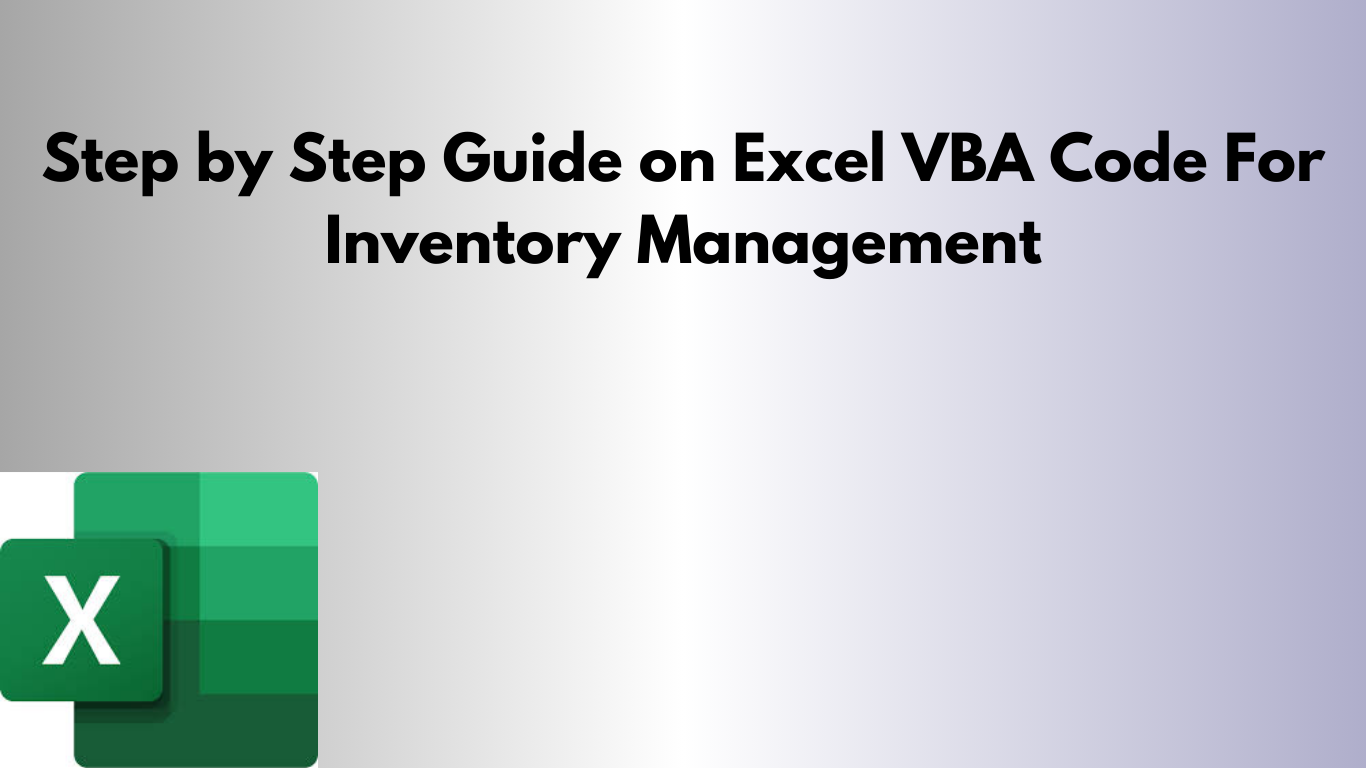- Inventory sheet with headers (Product ID, Name, Stock, Reorder Level, Unit Price, Total Value)
- Pre-built VBA macros for adding stock and deducting sales
- Conditional formatting and data validation
- A simple dashboard sheet with pivot-ready tables
Download: Inventory-Template.xlsm
Why Use Excel + VBA for Inventory?
What’s Inside the Template
- Inventory — Main table with searchable product IDs and live calculated total value.
- Transactions — Log of incoming and outgoing movements to preserve audit history.
- Dashboard — Quick KPIs (stock value, low-stock items, top movers) built with pivot tables and charts.
- Macros — Buttons for "Add Stock", "Remove Stock", and "Refresh Dashboard".
Quick Setup — 5 Steps
- Open the .xlsm file and enable macros when prompted.
- Update company and location fields (sheet header) so reports display correctly.
- Import or paste your product list into the Inventory sheet (Product ID, Name, Unit Price, Opening Stock, Reorder Level).
- Test the macros using a few sample transactions — the Transactions sheet will log each action.
- Customize reorder thresholds to match supplier lead times and safety stock rules.
Sample VBA Snippet (How Add/Remove Works)
Below is a compact example of the kind of macro included in the template. Paste it into a module in the VBA editor (Alt + F11) if you want to inspect or modify it.
' Sample: Remove stock
Sub RemoveStock(productID As String, qty As Long)
Dim ws As Worksheet
Set ws = ThisWorkbook.Worksheets("Inventory")
Dim rng As Range
Set rng = ws.Range("A:A").Find(What:=productID, LookIn:=xlValues, LookAt:=xlWhole)
If rng Is Nothing Then
MsgBox "Product not found: " & productID, vbExclamation
Exit Sub
End If
Dim stockCell As Range
Set stockCell = rng.Offset(0, 2) ' assumes Stock is column C
If stockCell.Value < qty Then
MsgBox "Insufficient stock for " & productID, vbExclamation
Exit Sub
End If
stockCell.Value = stockCell.Value - qty
' Add transaction log
With ThisWorkbook.Worksheets("Transactions")
.Cells(.Rows.Count, 1).End(xlUp).Offset(1, 0).Value = Now
.Cells(.Rows.Count, 1).End(xlUp).Offset(0, 1).Value = productID
.Cells(.Rows.Count, 1).End(xlUp).Offset(0, 2).Value = -qty
End With
End SubTips to Avoid Common Problems
- Always back up before bulk imports or large edits.
- Use data validation to prevent text in numeric fields.
- Protect critical sheets but allow users to use forms/buttons for safe operations.
- Keep a transactions log so you can audit changes and recover from mistakes.
Advanced Ideas
When you’re ready to scale:
- Integrate with barcode scanners — scan to add/remove stock automatically.
- Export/import CSVs to/from your POS or e-commerce platform for syncs.
- Use Power Query to pull historical sales data for demand forecasting.
- Move the backend to Access or SQL Server if you need multi-user concurrency and higher performance.
Want Me to Customize This for You?
If you’d like, I can:
- Personalize the template for your product fields and workflows
- Add barcode / scanner-ready fields and scanning macros
- Create a polished printable picking list or receiving form
- Write a step-by-step video script to walk your team through the process
Reply with the types of columns you need (example: SKU, Location, Lot #, Expiry Date) and I’ll provide a tailored .xlsm workbook.
